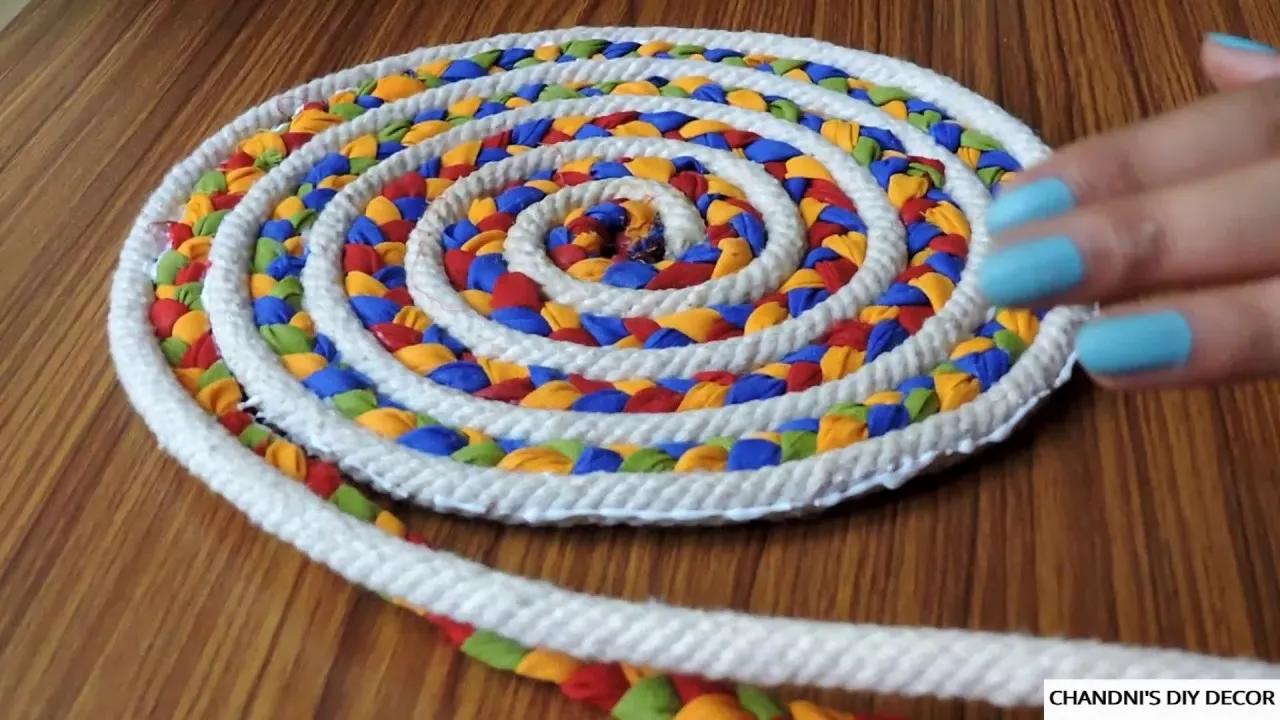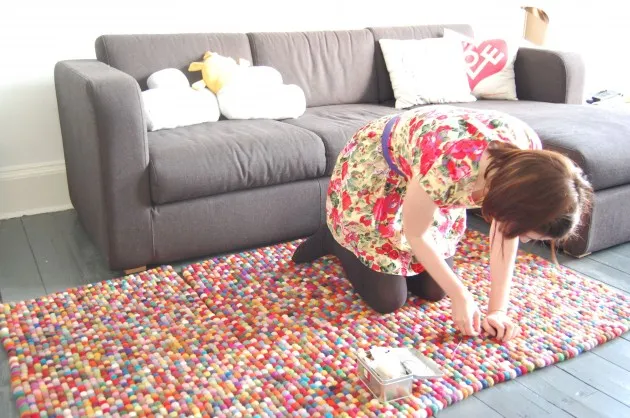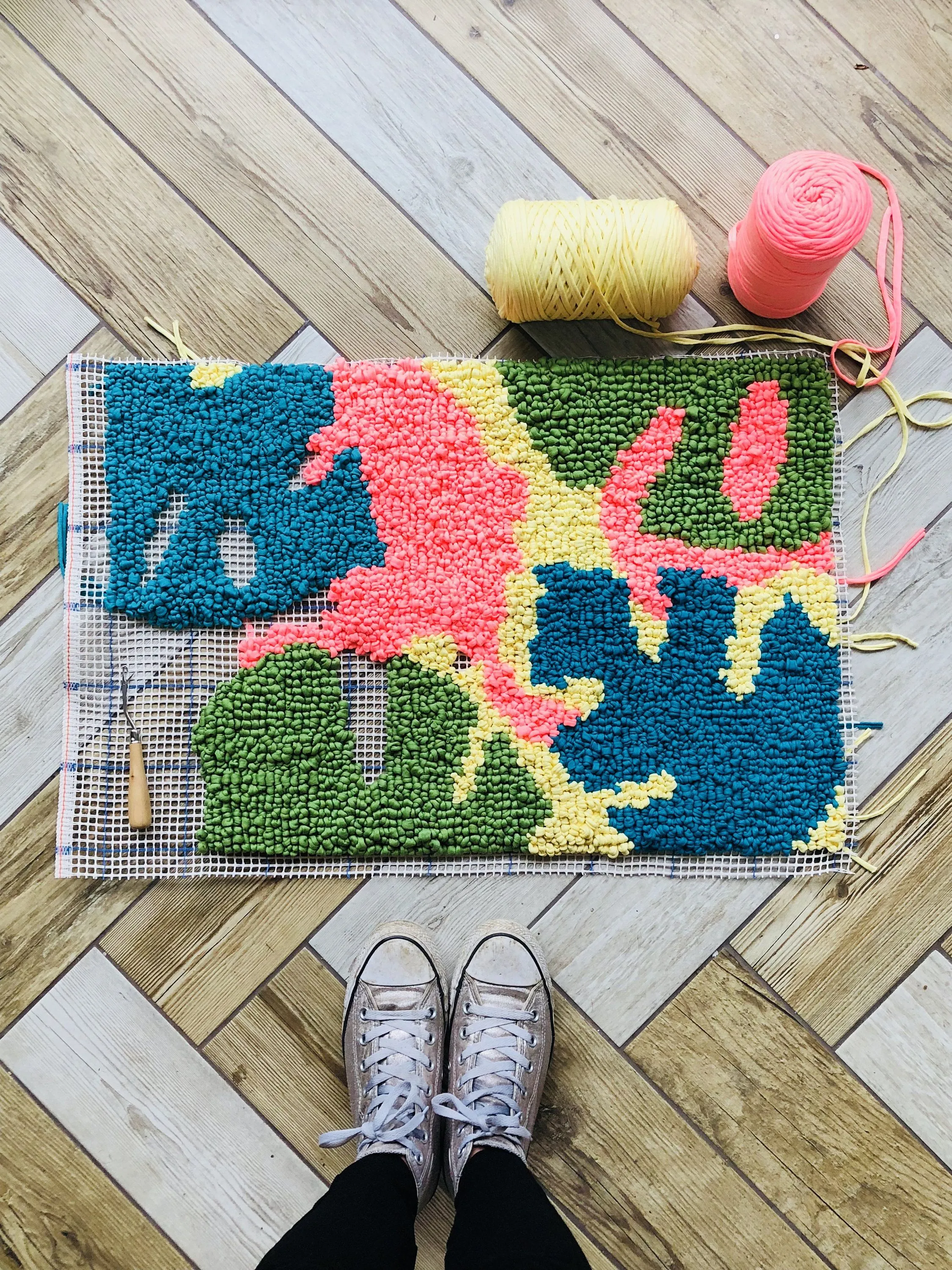Making rugs at home can be a rewarding and creative endeavor. Not only do you get to express your artistic side, but you also have the chance to add a personalized touch to your living space. Whether you’re looking to create a cozy atmosphere or just want a fun DIY project, crafting your own rug can be both enjoyable and practical. This step-by-step guide will walk you through the entire process, from gathering materials to the final finishing touches. So, roll up your sleeves and let’s dive into the art of rug-making!
Materials Needed

Before you get started on your rug-making journey, it's essential to gather all the necessary materials. Having everything on hand will make the process smoother and more enjoyable. Here’s a comprehensive list of what you’ll need:
- Fabric or Yarn: Choose your primary material based on the type of rug you want to create. For example:
- For a woven rug, opt for cotton or wool yarn.
- For a fabric rug, consider using old t-shirts, denim, or felt.
- Rug Base: You’ll need a sturdy base to attach your materials. Options include:
- Canvas fabric
- Rug backing material
- Old carpet scraps
- Tools: Make sure you have the following tools ready:
- Scissors
- Hot glue gun or sewing kit
- Rug loom (if you're weaving)
- Measuring tape
- Additional Decorations: For a unique touch, consider adding:
- Fabric paint
- Embellishments like beads or buttons
- Fringe or tassels for the edges
With these materials in hand, you’re ready to embark on your rug-making adventure! Remember, the most important part is to have fun and let your creativity shine.
Also Read This: How to Embed a YouTube Video in an Email
Choosing the Right Design

When it comes to making rugs at home, selecting the right design is crucial. Your rug should not only complement your space but also reflect your personal style. Here are some tips to help you choose a design that’s perfect for you:
- Consider Your Space: Think about where you’ll place the rug. A larger, more intricate design might work well in a spacious living room, while a simpler, smaller pattern could be ideal for a cozy bedroom.
- Color Palette: Choose colors that complement your existing decor. If your space is filled with bright colors, consider a rug with neutral tones to balance it out. Conversely, a brightly colored rug can add a pop of excitement to a more muted room.
- Style Preferences: Are you drawn to modern, traditional, bohemian, or minimalist styles? Your design should resonate with your aesthetic. Browse online platforms like Pinterest or Instagram for inspiration.
- Texture and Material: Think about the feel you want. A shaggy rug offers a cozy vibe, while a flat weave can provide a sleek, modern look. Consider what materials you want to use, as they can greatly influence the final design.
Once you have a clear idea of what you want, sketch it out or create a mood board. This will give you a visual reference to guide you as you start crafting your rug.
Also Read This: Recognizing Scammers on LinkedIn and Staying Safe
Preparing Your Workspace

Creating your own rug can be a fun and rewarding experience, but to ensure a smooth process, it’s essential to prepare your workspace properly. Here’s how to set the stage for crafting your masterpiece:
- Choose a Dedicated Area: Find a space in your home that is spacious enough for your rug-making supplies and allows you to work comfortably. A clean table or floor space can work well.
- Gather Your Tools: Make sure you have everything you need. Common tools include:
- Organize Your Materials: Keep your yarns, fabrics, and other supplies sorted. Use bins or baskets to separate different colors or types of materials, making it easier to access what you need.
- Set Up Good Lighting: Proper lighting is key to avoiding mistakes. Ensure your workspace has ample light, whether it’s natural daylight or bright lamps.
| Tool | Purpose |
|---|---|
| Scissors | For cutting yarn or fabric pieces. |
| Glue Gun | For attaching materials securely. |
| Measuring Tape | To ensure accurate dimensions. |
| Yarn Needle | For stitching and weaving. |
Preparing your workspace can make all the difference in your rug-making journey. A tidy, organized, and well-lit area will help you focus on the creative process and enjoy making your rug!
Also Read This: How to Remove Shutterstock Watermarks from Photos and Videos
5. Step-by-Step Instructions
Making a rug at home can be a fun and rewarding project! Whether you’re a seasoned crafter or a complete beginner, this step-by-step guide will help you create a beautiful rug tailored to your taste.
Step 1: Gather Your Materials
- Yarn or fabric strips (cotton, wool, or any material you prefer)
- Rug backing (canvas or burlap works great)
- Scissors
- Hot glue gun or sewing needle and thread
- Measuring tape
Step 2: Design Your Rug
Before you start, sketch out a design on paper. Think about colors, patterns, and the size of the rug. This will give you a clear vision and help you stay organized while crafting.
Step 3: Cut Your Materials
Using your measuring tape, cut the yarn or fabric into strips of your desired length. A good starting point is about 1 inch wide. If you’re using yarn, you can cut various lengths for a more textured look.
Step 4: Start Weaving
Begin attaching the strips to your rug backing. If you’re using a hot glue gun, apply a small amount of glue and press the strip down firmly. If you're sewing, stitch the strips in place, ensuring they're securely attached.
Step 5: Continue Until Complete
Keep adding strips in your chosen pattern until your rug reaches the desired size. Don’t hesitate to step back and check your progress, making adjustments as needed.
6. Finishing Touches
Once you’ve completed the main part of your rug, it’s time for the finishing touches! These small details can elevate your homemade rug from basic to beautiful.
Step 1: Trim Excess Material
Using scissors, trim any excess fabric or yarn that may be sticking out from the edges. This will give your rug a clean and polished look.
Step 2: Secure the Edges
To prevent fraying, you can either sew the edges or apply a thin line of hot glue. This step is essential for ensuring your rug lasts over time.
Step 3: Add a Non-Slip Backing
If your rug will be placed on a slippery surface, consider adding a non-slip backing. You can purchase adhesive non-slip pads or make your own using rubber matting.
Step 4: Clean Your Rug
Before using your rug, give it a good shake or vacuum. This helps remove any loose fibers and gives it a fresh appearance.
Step 5: Place It in Your Desired Spot
Finally, find the perfect spot for your new rug! Whether it’s in the living room, bedroom, or entryway, enjoy the cozy touch it adds to your home.
With these instructions and finishing touches, you’re all set to make a stunning rug that reflects your personal style!